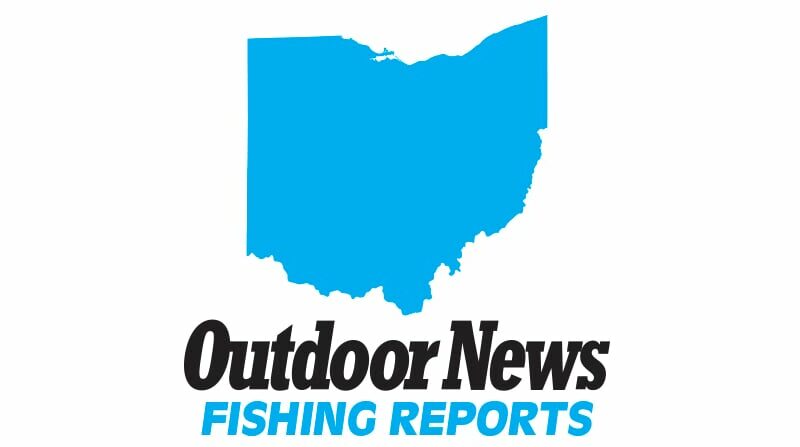Should ball fields and splash pads qualify for state funding for the outdoors? Decision reached in Minnesota – Outdoor News
St. Paul — Following debate that stretched through two meetings in November and December, the Legislative-Citizen Commission on Natural Resources in Minnesota found common ground on whether baseball fields or splash pads qualify for funding for the outdoors.
In short, those kinds of projects – by themselves, stand-alones – won’t qualify for Environment and Natural Resources Trust Fund dollars, the proceeds of lottery sales.
However, the compromise commission members agreed upon, prior to approval on Wednesday, Dec. 11, is to fund environment-enhancing aspects of baseball fields, basketball courts, splash pads, or playground equipment projects.

Commission member Sen. Torrey Westrom, R-Alexandria, said he’s trying to help “the smaller, less sophisticated applicants. So I’m just trying to change the language so it is more clear, and it just states that if you’re going to have something like this – just trying to keep it simple.”
If an applicant wants to add a pollinator garden, wastewater basin, or solar panels to a baseball field area, the environment-enhancing aspects could be funded by the ENRTF, but not the ball field itself.
Commission member Michael Reese and Rep. Josh Heintzeman, R-Nisswa, – who wasn’t present for the mid-December meeting – supported Westrom in this change as it was discussed.
The mid-November meeting was the original date to approve the RFP (the types of projects the commission would consider funding in 2026). However, after debate in November, the commission kicked its approval to the next meeting a month later in order to gain public feedback.
MORE COVERAGE FROM MINNESOTA OUTDOOR NEWS:
Many Minnesota hunters, managers report mediocre seasons for grouse, pheasants
Study shows gray wolf tolerance of humans, road densities may be higher than once thought
For one deer hunter, this was a really poor stand location
And still there was back and forth about whether ball fields should be funded, because it was hard for some members to explain how a ball field or basketball court can enhance the surrounding environment – the purpose of the ENRTF.
“Do I think that having teams show up at the ball field, play ball, get in their vans, go to McDonald’s is really enhancing their experience of the outdoors? Maybe, maybe that case could be made,” said commissioner Rita Albrecht.
There was also concern about whether keeping this language in the RFP will complicate the process and potentially waste LCCMR staff members’ time as they weed through whether a ball-field proposal meets the environmental criteria.

“I just wouldn’t want anybody to spend a lot of time and energy applying for something that therefore wouldn’t actually meet the criteria and then they’d be wasting their time and staff money and all sorts of things,” said commissioner Rep. Athena Hollins, DFL-St. Paul.
Commission member Bill Faber suggested the discussion was moot; he said he doesn’t believe that offering this opportunity to applicants will actually open a door for them or increase these kinds of proposals.
“To draw this out any longer is pointless. I’m happy if we put the language in, but I just don’t think it’s going to have any major impact in any which way,” Faber said.
Ultimately, the commission agreed to allow applicants to seek additional funds to cover the environmental aspects if the project aligns with the intent of ENRTF funding.
After the commission approved the amendment, Reese tried to circle back to revisit language in the strategic plan, which outlines LCCMR’s objectives until 2031.
“Rather than continuing each year to draw this out … let’s just fix the strategic plan. … It seemed like we had come to a reasonable agreement on the language, and I think it should be moved forward in the future RFPs,” Reese said.
That idea was almost immediately met with opposition because the strategic plan had been approved earlier in the meeting as written, and it’s a document that will govern beyond one year.
Albrecht worked on the subcommittee that drafted the strategic plan and read an excerpt from it that encapsulated the kind of projects that Reese was hoping to add.
“I think it would be redundant to add this into the strategic plan. I don’t really believe that it’s necessary,” Albrecht said.
Public input
Prior to the approval of the strategic plan and 2026 project priorities, the commission accepted public comment on both. About 150 people responded in total, offering feedback primarily on the types of projects that ENRTF money should go toward to benefit Minnesotans and the landscape.
That public feedback and perception of what the ENRTF should pay for was the motivator of Reese, Westrom, and Heintzeman as they sought prioritizing projects beyond research done by various agencies.
“It’s the little people that I’m trying to stand up for, people that are all over here in rural Minnesota – there’s even some in the metro. It’s not the regional park folks, it’s not the DNR, it’s not the U of M that have lawyers working on this,” Westrom said.
Around 10 of the 124-approved projects for 2025 are either entirely focused on trail enhancement or include some trail enhancement or construction, among other things.
Much of the public feedback prioritized restoration or enhancement of trails and outdoor recreation such as camping sites or other facilities. The feedback for the 2026 RFP reflected similar desires.
Expansion and development of outdoor recreation such as trails, fishing piers, parks, or green spaces are all included within the strategic plan as concepts that align with receiving ENRTF dollars.






